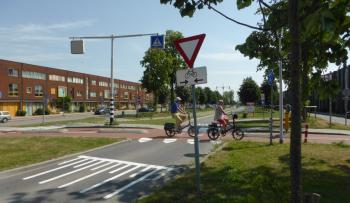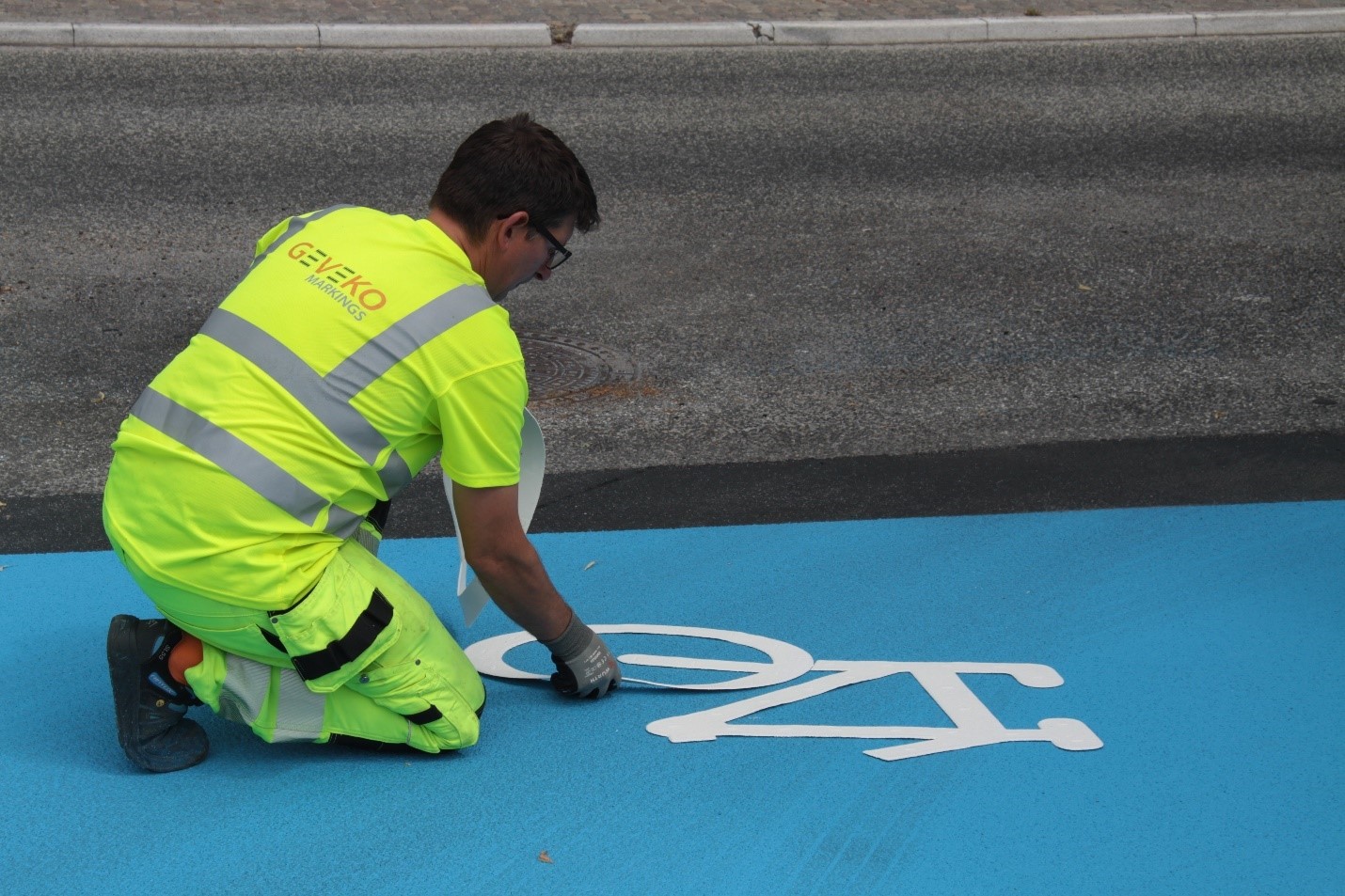
Can road markings support the development of cycling?
Eyes on the road!
A study by RISE Research Institutes of Sweden[1] measured cyclists' visual distribution of attention by eye tracking when cycling through central Stockholm. Most cyclists' attention is directed towards the surface in good light conditions and low traffic, regardless of the design of the infrastructure. Cyclists spend 48% of their riding time looking at the road surface, nearly as much time as looking at other road users, the environment, the traffic signs and traffic lights together. This is completely understandable, considering how sensitive bicycles are to surface quality. Bumps, holes, cracks, gratings or slippery patches can cause the cyclists to lose balance and fall, especially if the bicycle user is taken by surprise. This underlines the need for good maintenance of surfaces of cycle tracks and cycle lanes, but it also means that the surface is a very good location if you have an important message to convey to the bicycle user.
"If used in the right way and with the right materials road markings is an important and efficient part of safe infrastructure. We see this on a daily basis, and it is also a key learning from a 2023 Cycling Industries Europe study[2], where road markings are shown to be an important factor both to encourage cyclists to cycle more, and for non-cyclist to starts cycling", says Anders Wellving (Geveko Markings).
Cycle crossings and intersections
Geometric parameters and visibility splays are critical for safety on cycle crossings, as investigated in the recent ECF factsheet. But horizontal markings can be an important addition. The first and most obvious thing that comes to mind is highlighting the crossing with a coloured surface. This gives the cyclists a clear route across the intersection and draws the attention of the drivers. But that’s not all.
“Sharks teeth” are a very good way to clearly indicate who has the right of way on the cycle crossing or even intersections of different cycle tracks. Depending on the local context, they can be placed on the carriageway before the crossing or on (one of) the cycle track.
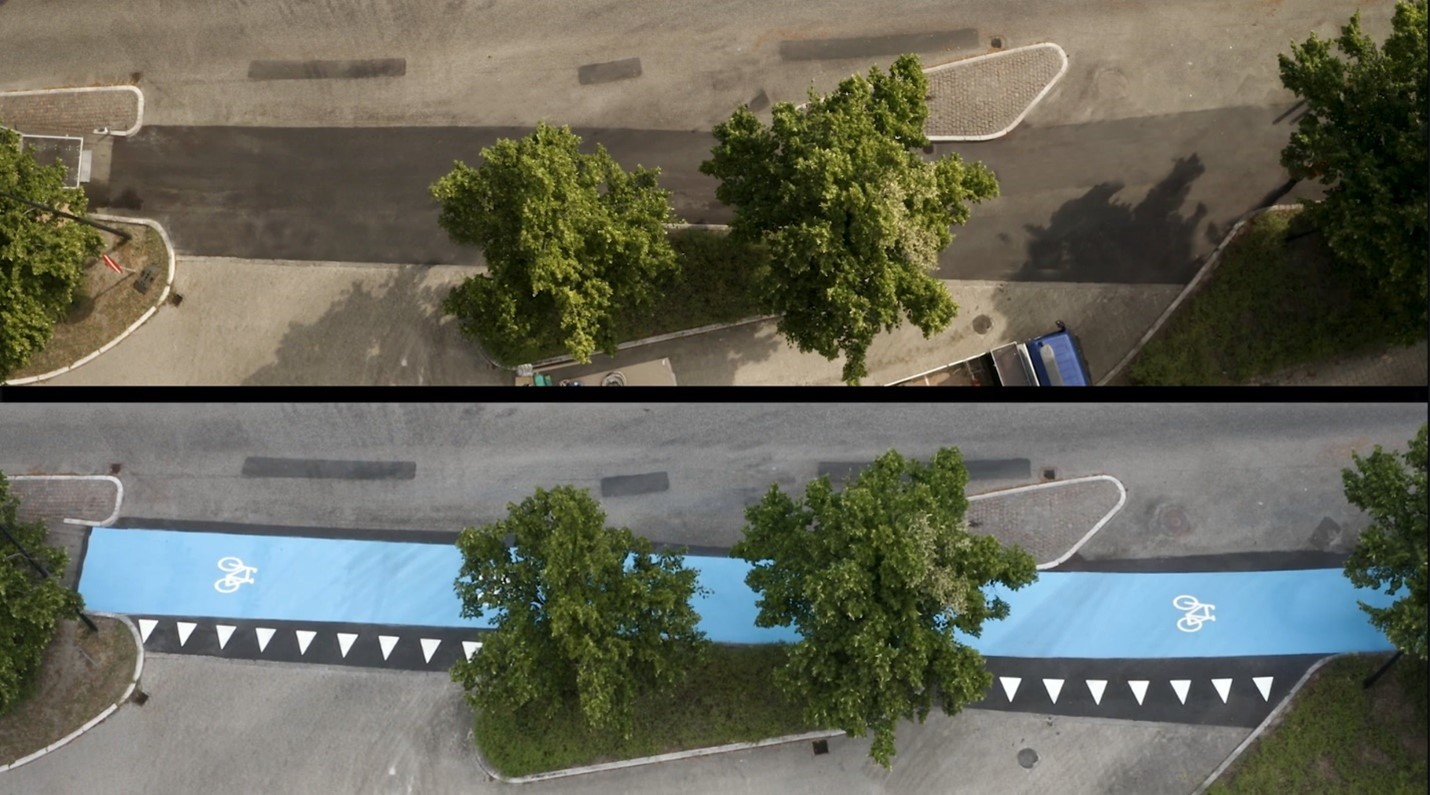
Cycle crossing in Denmark - before and after application of colouring and shark teeth. Photo credit: Geveko Markings
On bidirectional crossings, a pictogram of a bicycle accompanied by two arrows can draw the car driver's attention to the fact they should expect cyclists coming from both directions. Drivers tend to look left (in right-hand traffic) when approaching the crossing, because that’s where cars they need to give way are coming from. To get them to also look right, an extra visual cue might be needed.
Horizontal markings are also critical for designating solutions like advanced stop lines or two-stage turns on intersections. An advanced stop line (also known as bike box or bike lock) is an area on an entry arm of a junction that reserves space for cyclists. It makes it easier for cyclists to perform a turn manoeuvre or increases their visibility for car drivers. A two-stage (or hook) turn provision provides space on the carriageway allowing cyclists wishing to turn to cross the intersection in two separate stages.

Advanced Stop Line/Bike Box. Photo credit: Aleksander Buczyński.
Wayfinding
Horizontal markings can also be used for wayfinding – indicating the direction, direction change or confirmation that you are on the right track. Horizontal markings are more difficult to vandalise than “normal” signs – they cannot be turned or bent. On the other hand, they might not be visible under snow or dirt, and will not work on unpaved surfaces. Good wayfinding systems usually combine vertical signs and horizontal markings. For example, wayfinding on the Flemish cycle highways operates on the ARC (Announce – Redirect – Confirm) principle. Announce (usually 50 m before the change of direction) and Redirect (at the intersection itself) are vertical signs, while Confirm (after the intersection) is a horizontal marking.
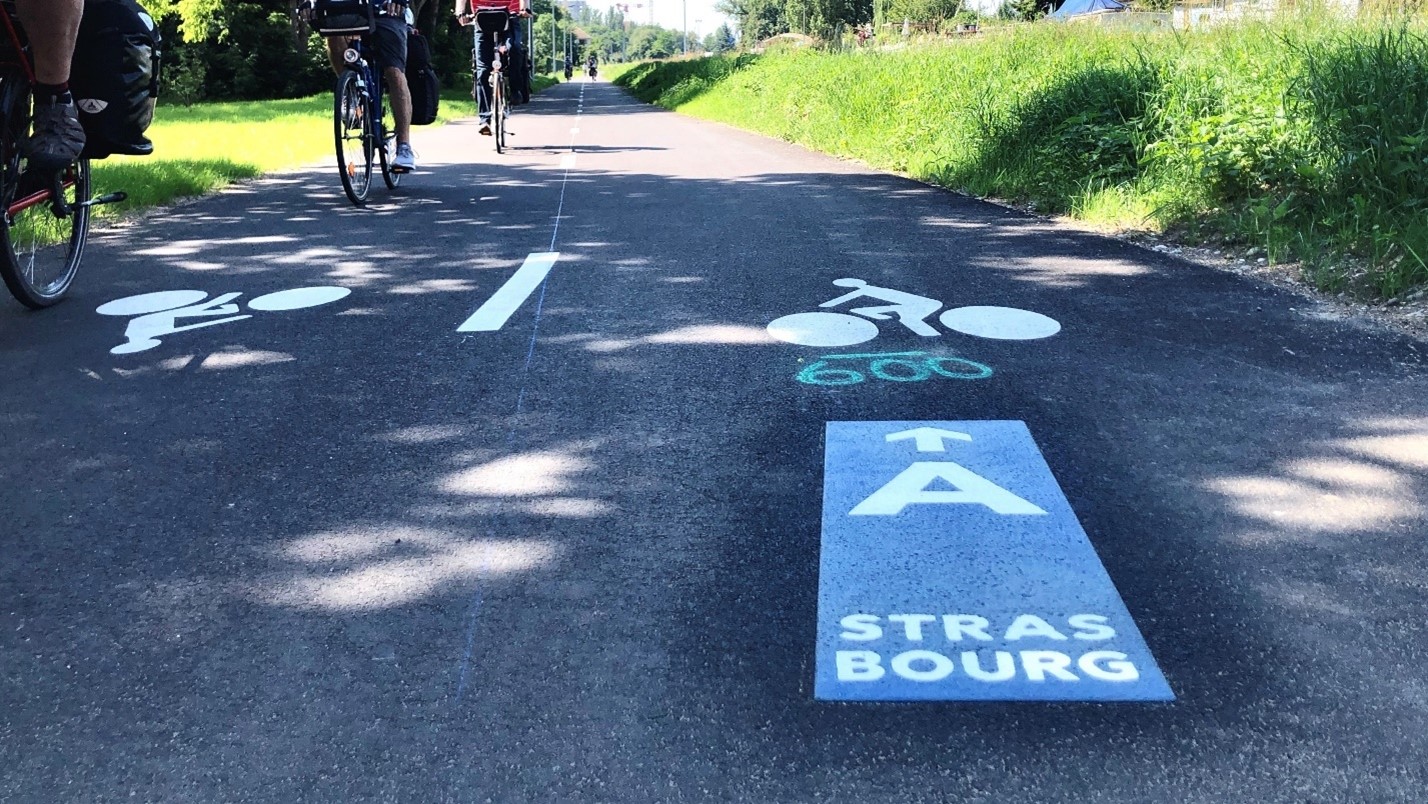
Cycle highway (Velostras) markings indicating route to Strasbourg, France. Photo credit: Geveko Markings.
Optical narrowing of the carriageway
Markings can also be used to optically narrow the carriageway. This increases the perception of speed among the drivers, effectively calming traffic. A special case of such narrowing are 2-1 roads, typically used on rural roads with low volumes of motorised traffic.
A 2-1 road is a bidirectional road with two advisory cycle lanes marked on the carriageway, where the remaining carriageway is not wide enough for two motor vehicles other than motorcycle. Power driven vehicle drivers are advised to use the central lane in both directions, only deviating to the edge of the carriageway in the case of passing a vehicle incoming from the opposite direction. Although opinions on the measure vary, it is not always feasible to provide a fully segregated cycle track.
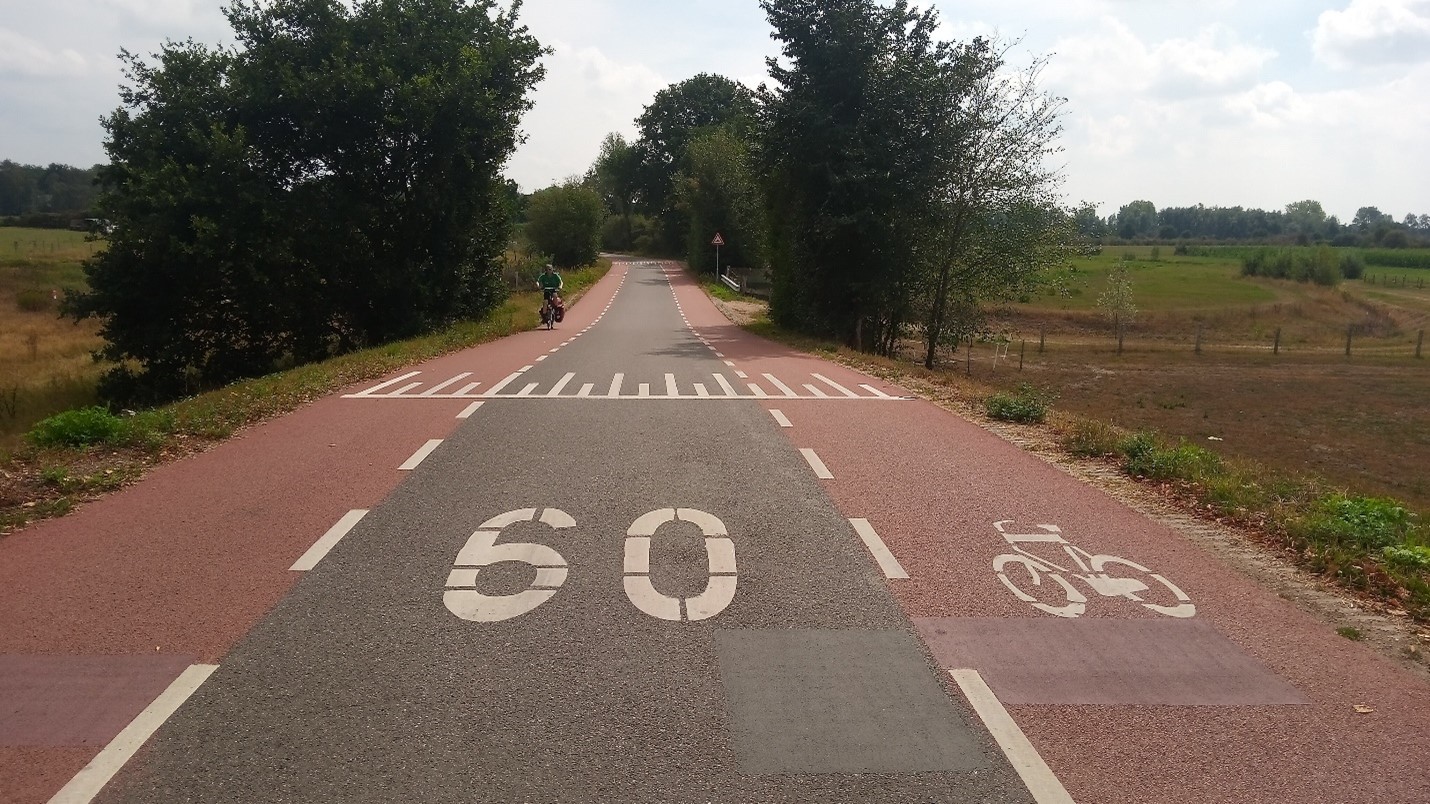
A 60 km/h, 2-1 rural road in the Netherlands. Photo credit: Aleksander Buczyński.
[1] Rapport TRV 2019/100490. Modell för att mäta oskyddade trafikanters uppmärksamhetsfördelning som funktion av trafikmiljöers utformning och standard
[2] Available on request from info@cyclingindustries.com
Contact the author
Recent news!
Upcoming events
Contact Us
Avenue des Arts, 7-8
Postal address: Rue de la Charité, 22
1210 Brussels, Belgium



